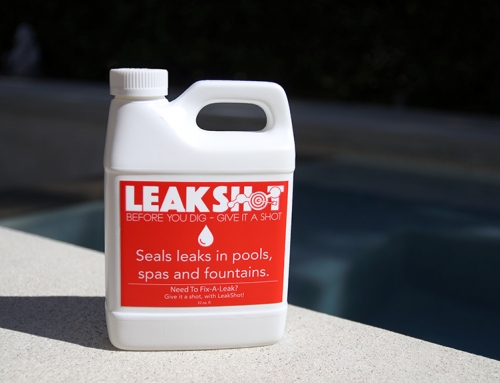A customer called with a question about air bubbles. While the system was running, they saw bubbles coming back into the pump. Their pool service tech told them that this was a symptom that indicated a suction line leak. Before tearing up concrete, they opted to use PipeFuze to fix the leak.
Their pool tech started by isolating the line. He cut the pipe near the pump where it stubbed up from the ground. At the fitting in the pool, he inserted a compression plug with a hose that attached to the return rig in the PipeFuze Contractor Kit. From the pool side, this allows the water to return from the pipe, back to the bucket where the PipeFuze liquids are being sent into the line.
He then set his bucket near the area where he cut the line by the suction pump. Following the process, as described in the video below, he put the PipeFuze Pump into the bucket – half filled with water, and connected the Injection Rig into the pipe with another compression plug, making a circuit of water that will exit the bucket, run through the line and re-enter the bucket for re-circulation.
With low pressure, just 8-12 pounds, they tested the line for pressure loss. It dropped 3 pounds of pressure in 60 seconds, showing in fact, that the line was losing pressure and did have a small hole or crack in it. Because the pressure loss proved it to be a leak, and not a complete separation, the service professional was convinced this would be sealed using PipeFuze.
With the low pressure of water circulating through the pipe, the service tech poured in Part A of the PipeFuze Liquid Set into the bucket. The pump distributes the particulate and liquid in the bottle through the system. The particulate, over the course of 2 hours, works to plug the leak and stop water from exiting the pipe. With another low pressure test, the pool tech could see that the water pressure was no longer dropping in the line. The particulate and the liquid from Part A of the liquid set had plugged the hole.
Now, with the same process of circulating water through the pipe, the pool tech added Part B of the PipeFuze Liquid Set. This includes a hardener that affects the liquid from Part A that has formed a dam in the hole. Over the course of another 2 hours, the particulate and liquid from part A harden to form a permanent bond to the edges of the hole where the leak originally occurred. Like platelets in the blood stream, the fuse themselves on both sides of the pipe to form a bond that seals the pipe and stops water from escaping.
When put back into service, the bubbles no longer appeared in the pump and the loss of pressure from the suction line leak was gone.
Abel Hernandez, the pool tech shares, “It was an issue of simply not wanting to have to break the concrete deck to repair the pipe. It was a small hole, that was obvious when we tested the pressure, but air bubbles aren’t good for a pump and leaks will just get bigger if you leave them leaking, so PipeFuze was an obvious alternative to construction. I began the process at 9am and by 4 in the afternoon, the family was enjoying their pool leak free. They couldn’t have been happier.”
If your pool is leaking and your pipes show a pressure loss of less than 5 lbs over the course of 30 seconds, PipeFuze is the best alternative to digging and breaking concrete. Spare the expense of fixing pipes underground with invasive techniques and use PipeFuze to seal leaks and stop damage and the expense of water loss.
Learn more by visiting https://pipefuze.com or by calling 818-436-2953 for more information.





